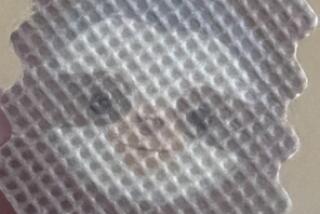BOYLE HEIGHTS : A Goofy Lesson in Business Sense
- Share via
In the second-floor hallway of Utah Street Elementary School last Wednesday, third-grade students hawked jewelry, buttons, paper hats, food, games and offered to style hair.
They were vying for “goofies,” the currency of their after-school program that taught them to connect their daily math and reading lessons with the real world of commerce. After four months of learning how to establish their businesses, they held a bazaar to earn more goofies and divide up the earnings with business partners and employees.
“Rainbow Restaurant! Step right in!” yelled Roxana Valdez, 9, who wore a hair-covering to protect her fare of nachos, pizza, popcorn and punch from her long tresses. “It’s so famous! It’s so rich!”
Other students tried to get the attention of potential customers among other after-school students who had earned goofies--actually, red raffle tickets--to spend through good behavior and turning in their homework.
Elizabeth Delgadillo, 9, and her business partner Evelyn Gomez, 8, sold photo buttons that sported pictures of classmates and teachers. Their employees, Elizabeth Vazquez, Augustin Solorzano and Mario Ramirez, all 8, formed a production line behind them to stamp out the buttons just right. Some were less than perfect.
“See this one that’s upside down? It costs three goofies,” said Elizabeth, who inspected the buttons and priced them between two and six goofies.
Teacher Mayra Fernandez, who has taught for 27 years, started the after-school program in January when she noticed that her third-grade students were not at the level they should have been. She met with parents and asked if she could keep the students until 5:30 p.m. three days a week and started helping the students build their business enterprises.
“I wanted to teach children in the concrete what they have learned academically,” Fernandez said. “To make the hats, I would ask them to cut out a 3-foot square of paper and they would ask, ‘What’s a square?’ ”
Each business owner had to apply for a license and pay for it with goofies earned in class. Students could also lose their goofies through fines for behavior such as throwing paper (a fine of 10 goofies), name-calling (three goofies) or needlessly going to the bathroom (five goofies).
“It has reduced trips to the bathroom by 90%,” Fernandez said.
The lesson in capitalism also has taught Fernandez a thing or two. Students who had lost goofies to the point of having to turn over every one earned to pay off debts showed signs of becoming disconnected from the classroom society, she said. And the “millionaires” also became disconnected from the classroom when they started paying off classmates to do chores.
“What we’ve learned in here is already out there in the business world,” she said. “My kids have re-created embezzlement and classism.”
In the Rainbow Restaurant, 8-year-old chef Alfredo Martinez burned a finger making popcorn. He busied himself putting plates of nachos in a toaster oven while Carolina Gonzalez, 9, hurried to serve cups of punch to customers.
In the hallway, Rosario Olivares, 9, and business partner Cynthia Sierra, 8, counted “100-something” goofies they earned selling beaded necklaces, bracelets and rings. The colorful baubles were presented in boxes lined with matching tissue paper and by day’s end, there were only a few left.
“It was a little bit hard,” Rosario said of the manufacturing process. “The beads kept falling down.”
But as Cynthia, wearing a purple lace dress, counted their earnings, she shouted, “Ooh-la-la!”
More to Read
Sign up for Essential California
The most important California stories and recommendations in your inbox every morning.
You may occasionally receive promotional content from the Los Angeles Times.













